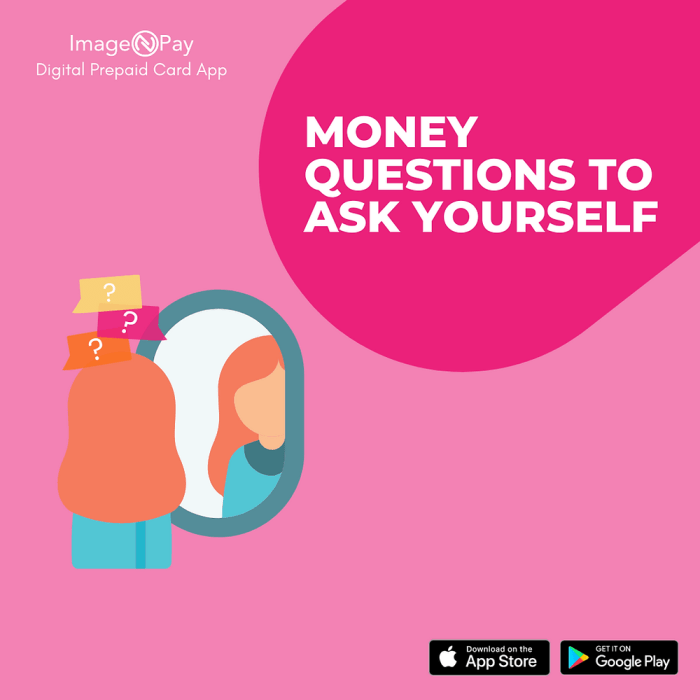Turning 30 is a major milestone, and it’s the perfect time to take stock of your financial life. You’re likely starting to think about bigger goals like buying a house, starting a family, or even just achieving financial independence.
But before you can reach those goals, you need to get your finances in order.
This guide is your roadmap to financial success. We’ll cover everything from building a budget to managing debt and investing for the future. Whether you’re just starting out or looking to get back on track, these tips will help you achieve your financial goals and build a solid foundation for the future.
Financial Foundations: Setting the Stage
Financial literacy is your superpower in the game of life. It’s like knowing the secret cheat codes that unlock financial freedom and help you level up your future. But just like any skill, it needs to be learned and honed.
The earlier you start, the better equipped you’ll be to handle your finances like a pro.
Building a Solid Financial Foundation
Building a solid financial foundation is like constructing a sturdy house: it takes time, planning, and the right materials. It’s not about becoming a financial guru overnight, but rather about making smart choices and developing good habits that pay off in the long run.
- Track Your Spending:First things first, you need to know where your money is going. Use a budgeting app or a simple spreadsheet to monitor your income and expenses. This will help you identify areas where you can cut back and free up more cash for saving and investing.
- Create a Budget:Once you know where your money is going, you can start creating a budget. A budget is like a roadmap for your finances, guiding you towards your financial goals. It’s about allocating your income to different categories, like housing, food, transportation, and entertainment.
- Save for Emergencies:Life is unpredictable, and unexpected expenses can pop up anytime. Having an emergency fund is like having a safety net to catch you when you need it most. Aim to save enough to cover 3-6 months of living expenses.
- Pay Down Debt:Debt can be a financial burden, so it’s important to tackle it head-on. Focus on paying down high-interest debt first, like credit card debt, to avoid accumulating even more interest.
- Invest for the Future:Investing is like planting a seed for your financial future. It allows your money to grow over time, helping you reach your long-term goals. Start small and invest consistently, even if it’s just a little bit each month.
Budgeting
Budgeting is the foundation of financial success. It’s like having a game plan for your money, helping you stay on track and avoid overspending.
- 50/30/20 Rule:This rule is a popular budgeting strategy. It suggests allocating 50% of your income to needs, 30% to wants, and 20% to savings and debt repayment.
- Zero-Based Budgeting:This method involves allocating every dollar of your income to a specific category, ensuring that you don’t spend more than you earn.
- Envelope System:This old-school method involves dividing your cash into different envelopes for different spending categories. It can help you stay on track and avoid overspending.
Saving
Saving is like building a financial cushion that protects you from unexpected expenses and helps you reach your financial goals.
- Emergency Fund:This is a safety net that covers 3-6 months of living expenses in case of job loss, illness, or unexpected expenses.
- Retirement Savings:Saving for retirement is like planning for your future self. Start early and invest consistently to build a comfortable nest egg.
- Down Payment Fund:If you’re planning to buy a home, saving for a down payment is crucial. The larger your down payment, the lower your monthly mortgage payments will be.
Investing
Investing is like planting a seed for your financial future. It allows your money to grow over time, helping you reach your long-term goals.
Okay, so you’re all about getting your financial ducks in a row before 30, which is totally boss. But let’s be real, sometimes the pressure of adulting can feel like a total drag. That’s where a little zen comes in handy.
Check out this awesome Minimalist Boho Landscape Coloring Book to chill out and de-stress. You’ll be back to crushing those financial goals in no time.
- Stocks:Stocks represent ownership in a company. They can be risky but have the potential for high returns.
- Bonds:Bonds are loans to companies or governments. They generally offer lower returns than stocks but are considered less risky.
- Mutual Funds:Mutual funds pool money from multiple investors to buy a diversified portfolio of stocks, bonds, or other assets.
- Index Funds:Index funds track a specific market index, such as the S&P 500. They offer diversification and low fees.
Creating a Personal Financial Plan
A personal financial plan is like a roadmap to your financial future. It Artikels your goals, strategies, and timelines for achieving financial success.
Yo, getting your finances straight before 30 is like leveling up in life. It’s about figuring out your money game, not just what you’re making, but what you’re spending and saving. And sometimes, you gotta chill out, take a break from the spreadsheets and budget breakdowns.
Grab a coloring book like this one, Nature Coloring Book 50 Forest Mountains Lakes and Valley Coloring Pages for Adults. Amazing Grayscale Scenes for Hours of Relaxing Coloring. 8.5 x 11 Size , and color your way to a calmer head.
Then you can jump back into those money questions with a fresh perspective and crush your financial goals.
- Define Your Financial Goals:What do you want to achieve financially? This could include buying a house, retiring early, or starting a business.
- Assess Your Current Financial Situation:Take stock of your income, expenses, assets, and debts.
- Create a Budget:Develop a realistic budget that aligns with your goals.
- Develop a Savings Plan:Determine how much you need to save and where you will invest your savings.
- Monitor and Adjust:Regularly review your plan and make adjustments as needed to stay on track.
Mastering Money Management

This section dives into the essential skills for managing your money effectively, helping you take control of your finances and achieve your financial goals. We’ll explore strategies to create a budget, automate savings and investing, track your expenses, and build an emergency fund.
Budgeting Strategies for Young Adults
A budget is a roadmap for your money. It helps you understand where your money is going and how to make it work for you. It’s essential to track your income and expenses and allocate your money wisely. Here are some effective budgeting strategies:
- The 50/30/20 Rule:This popular method allocates 50% of your after-tax income to needs (housing, utilities, groceries), 30% to wants (dining out, entertainment), and 20% to savings and debt repayment. This provides a balanced approach to spending and saving.
- Zero-Based Budgeting:This strategy involves allocating every dollar of your income to a specific category, ensuring that you’re not overspending. It’s a great way to gain control of your finances, especially if you struggle with impulse purchases.
- The Envelope Method:This classic method involves dividing your cash into physical envelopes, each representing a specific spending category. This helps you visualize your spending and avoid overspending in any one area.
- Budgeting Apps:There are numerous budgeting apps available that can help you track your spending, set budgets, and even automate savings. These apps can simplify the budgeting process and provide valuable insights into your spending habits.
Automating Savings and Investing
Automating your savings and investments is a powerful way to ensure you’re consistently saving and growing your wealth. It removes the temptation to spend money you’ve earmarked for savings and allows you to build wealth gradually over time.
Yo, hitting your 30s and still feelin’ like a broke college student? Get your finances on track with “Money Questions to Answer Before 30: Simple Ways to Get Your Finances Straight,” a game-changer for your financial future. Download And Listen Here to unlock the secrets to financial freedom and ditch that broke-ass vibe for good.
- Automatic Transfers:Set up automatic transfers from your checking account to your savings account on a regular basis, such as weekly or monthly. This ensures that you’re consistently saving without having to think about it.
- Recurring Investments:Automate regular contributions to your investment accounts, such as your 401(k) or Roth IRA. This allows you to take advantage of dollar-cost averaging, which helps you buy more shares when prices are low and fewer shares when prices are high.
Tracking Expenses and Identifying Areas for Improvement
Tracking your expenses is crucial for understanding where your money is going and identifying areas where you can save. There are various methods for tracking your expenses:
- Spreadsheet or Notebook:A simple spreadsheet or notebook can be used to manually track your income and expenses. This method is straightforward and allows you to customize your tracking categories.
- Expense Tracking Apps:Numerous apps are available that can automatically track your expenses using your bank account data. These apps provide detailed breakdowns of your spending and can identify areas for improvement.
- The 50/30/20 Rule:This rule provides a quick and easy way to assess your spending habits and identify potential areas for improvement. If you’re consistently overspending in one category, you can adjust your budget accordingly.
Building an Emergency Fund
An emergency fund is a safety net that provides financial security during unexpected events, such as job loss, medical emergencies, or car repairs. It’s essential to have at least three to six months’ worth of living expenses saved in an easily accessible account.
Yo, so you’re thinking about getting your finances on track before 30, right? That’s totally the vibe. But before you dive into the world of budgeting and saving, it’s super helpful to check out Lessons Learned Stories from Women Leaders in STEM.
These stories are seriously inspiring, and they’ll show you how to crush your goals. Once you’ve got that motivation flowing, you’ll be ready to tackle those money questions and get your finances straight, boss lady!
- Start Small:Even if you can only save a small amount each month, it’s important to start building your emergency fund. Over time, your savings will grow.
- Set Realistic Goals:Don’t try to save too much too quickly. Set realistic savings goals that you can consistently achieve.
- Automate Your Savings:Set up automatic transfers to your emergency fund account on a regular basis. This ensures that you’re consistently saving without having to think about it.
- Use a High-Yield Savings Account:Choose a savings account that offers a higher interest rate to maximize your earnings.
Navigating Debt and Credit

Navigating the world of debt and credit can feel like trying to solve a Rubik’s Cube – confusing and overwhelming at first. But just like mastering the cube, it’s all about understanding the mechanics and applying the right moves.
Good Debt vs. Bad Debt
Debt isn’t inherently bad; it’s how you use it that matters. Good debt helps you build wealth, like taking out a mortgage to buy a house or a student loan for a degree that can lead to a higher-paying job.
Bad debt, on the other hand, drains your resources without building long-term value, like credit card debt with high interest rates or payday loans.
Managing and Reducing Debt
Managing debt is like navigating a tightrope walk – it requires careful balance and strategy. The key is to create a plan and stick to it.
- Create a Budget:Track your income and expenses to see where your money is going and identify areas where you can cut back. Tools like Mint or Personal Capital can help.
- Prioritize Debt:Focus on paying down high-interest debt first, like credit cards, using the snowball or avalanche method.
- Debt Consolidation:Consider combining multiple debts into a single loan with a lower interest rate. This can simplify payments and potentially save money on interest.
- Negotiate with Creditors:If you’re struggling to make payments, reach out to your creditors and explore options like lowering your interest rate or extending your repayment term.
Building a Strong Credit Score
Your credit score is like your financial report card, reflecting your responsible use of credit. Lenders use it to determine your creditworthiness, impacting everything from loan interest rates to insurance premiums.
- Pay Bills on Time:On-time payments are the most important factor in your credit score. Set reminders or automate payments to avoid late fees and negative marks.
- Keep Credit Utilization Low:Aim to keep your credit utilization ratio (amount of credit used vs. available credit) below 30%. This shows lenders you’re not overextending yourself.
- Diversify Your Credit:Having a mix of credit accounts (credit cards, loans, etc.) demonstrates responsible borrowing and can boost your score.
- Avoid Closing Old Accounts:Older accounts contribute to your credit history and can help improve your score.
Credit Cards: Tools for Financial Management
Credit cards can be powerful tools for building credit, earning rewards, and managing expenses. However, irresponsible use can lead to debt accumulation and financial ruin.
- Choose the Right Card:Select a card that aligns with your needs and spending habits. Look for low interest rates, rewards programs, and perks that benefit you.
- Use Credit Cards Responsibly:Only spend what you can afford to pay back in full each month. Avoid carrying balances, as interest charges can quickly add up.
- Monitor Your Spending:Track your credit card usage to stay within your budget and avoid overspending.
- Pay on Time:Always pay your credit card bills on time to avoid late fees and damage to your credit score.
Investing for the Future
You’re young, you’re ambitious, and you’re ready to build a solid financial foundation. Investing is the key to unlocking your financial goals and securing a bright future. But navigating the world of stocks, bonds, and real estate can feel overwhelming, especially when you’re just starting out.
Don’t worry, we’ve got you covered! We’ll break down the basics of investing and provide practical tips to help you get started on your journey to financial freedom.
Investment Options for Young Adults
Investing doesn’t have to be complicated. There are various options that can be tailored to your specific financial situation and risk tolerance.
- Retirement Accounts:Start saving early for retirement. Consider contributing to a 401(k) or Roth IRA. These accounts offer tax advantages that can help your money grow faster.
- Index Funds:Index funds are a low-cost and diversified way to invest in the stock market. They track a specific market index, such as the S&P 500, which means you’re essentially investing in a basket of stocks.
- Exchange-Traded Funds (ETFs):ETFs are similar to index funds but are traded on stock exchanges. They offer a diverse portfolio of assets, and they can be bought and sold throughout the day.
- Robo-Advisors:Robo-advisors are online platforms that use algorithms to create and manage investment portfolios based on your risk tolerance and financial goals. They’re a great option for investors who want a hands-off approach.
- Individual Stocks:Investing in individual stocks can be riskier but also potentially more rewarding. Before investing in individual stocks, do your research and invest in companies you understand.
Diversification and Risk Management
Diversification is key to managing risk. Don’t put all your eggs in one basket. Spread your investments across different asset classes, such as stocks, bonds, and real estate.
- Stocks:Stocks represent ownership in a company. They can be volatile but have the potential for higher returns.
- Bonds:Bonds are loans that you make to a company or government. They typically offer lower returns than stocks but are considered less risky.
- Real Estate:Real estate can be a good long-term investment, but it requires significant capital and can be illiquid.
Starting a Portfolio
Creating a portfolio can seem daunting, but it’s easier than you think.
- Define your goals:What are you saving for? Retirement? A down payment on a house? A dream vacation?
- Assess your risk tolerance:How comfortable are you with the potential for losses?
- Choose your investment strategy:Do you want to manage your portfolio yourself, or do you prefer a hands-off approach with a robo-advisor?
- Start small and invest regularly:Even small amounts invested consistently can add up over time.
Navigating Stocks, Bonds, and Real Estate
The stock market can be a rollercoaster ride, but there are strategies to navigate it.
- Do your research:Understand the company you’re investing in, its financial performance, and its industry.
- Invest for the long term:Don’t panic sell when the market drops. Remember, the stock market always goes up in the long run.
- Consider a financial advisor:A financial advisor can help you create a personalized investment plan and provide guidance on managing your portfolio.
Book Review: “Broke Millennial” by Erin Lowry
In today’s world, young adults face a unique set of financial challenges. Student loan debt, stagnant wages, and a rising cost of living make it difficult to save for the future. “Broke Millennial: Stop Scraping By and Get Your Financial Life on Track” by Erin Lowry is a relatable and practical guide for navigating these challenges and building a solid financial foundation.
Key Takeaways and Insights
Lowry’s book is grounded in real-life experiences and uses a conversational tone to connect with readers. She doesn’t shy away from the struggles of being a young adult in today’s economy, but she offers practical advice and strategies for taking control of your finances.
Here are some of the book’s key takeaways and insights:
- Embrace a Budget-Friendly Lifestyle:Lowry emphasizes the importance of mindful spending and living within your means. She encourages readers to track their spending, identify areas where they can cut back, and create a realistic budget that fits their lifestyle.
- Prioritize Saving and Investing:“Broke Millennial” highlights the importance of saving for both short-term and long-term goals. Lowry provides practical advice on how to automate savings, choose the right investment vehicles, and build a diversified portfolio.
- Tackle Debt Strategically:Lowry offers guidance on managing student loan debt, credit card debt, and other forms of debt. She encourages readers to prioritize high-interest debt, develop a repayment plan, and explore options like debt consolidation or refinancing.
- Develop a Financial Mindset:“Broke Millennial” goes beyond practical tips and emphasizes the importance of developing a positive financial mindset. Lowry encourages readers to challenge negative beliefs about money, set realistic goals, and celebrate their progress.
Personal Reflections and Opinions
I found “Broke Millennial” to be an incredibly helpful and empowering resource. Lowry’s approachable writing style and real-life examples made the book relatable and engaging. I particularly appreciated her emphasis on building a budget-friendly lifestyle and prioritizing saving. The book’s practical advice and strategies have helped me to take control of my finances and make informed decisions about my money.
Strengths and Weaknesses
While “Broke Millennial” is a valuable resource for young adults, it does have some limitations. Here are some of the book’s strengths and weaknesses:
- Strengths:
- Relatable and Engaging Writing Style
- Practical Advice and Strategies
- Focus on Building a Positive Financial Mindset
- Weaknesses:
- Some of the advice may not be applicable to all readers, depending on their specific financial situation and goals.
- The book could benefit from more in-depth coverage of certain topics, such as investing or retirement planning.
Concluding Remarks

Taking control of your finances isn’t just about saving money; it’s about setting yourself up for a brighter future. By learning about budgeting, investing, and managing debt, you’re not just building a financial plan, you’re building a life you can truly be proud of.
So, buckle up, grab a pen and paper, and get ready to unlock your financial potential!
FAQ Guide
What are some common financial mistakes young adults make?
Some common mistakes include not budgeting, not saving enough, racking up credit card debt, and not investing early enough. It’s important to learn from these mistakes and build healthy financial habits early on.
How much should I be saving each month?
There’s no one-size-fits-all answer, but a good rule of thumb is to aim for 15-20% of your income. Start small and gradually increase your savings as your income grows.
Is it better to pay off debt or invest my money?
It depends on your interest rates and your investment goals. If you have high-interest debt, it’s generally a good idea to pay it off first. But if you have low-interest debt and are confident about your investment strategy, you may want to consider investing some of your money.
What are some good resources for learning about personal finance?
There are many great resources available, including books, websites, podcasts, and financial advisors. Start with a few resources that you find easy to understand and enjoyable to learn from.

